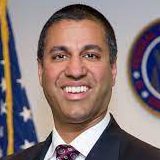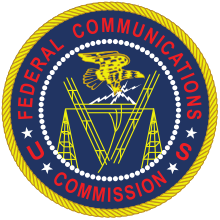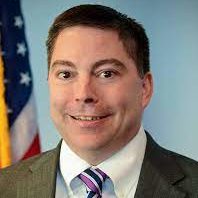Executive Summary
“Throttling” is the degrading of Internet traffic based on source, destination, or content. One criticism of the ban on throttling contained in the 2015 Open Internet Order was that it was based on very little evidence that any anticompetitive throttling had ever occurred. As thenCommissioner Ajit Pai pointed out in his dissent, “the Order ominously claims that . . . the FCC continues ‘to hear concerns about other broadband provider practices involving blocking or degrading third-party applications.’ The evidence of these continuing threats? There is none; it’s all anecdote, hypothesis, and hysteria.”
However, a recent Bloomberg News article and numerous online sources now claim that evidence of throttling has been found. According to the Bloomberg article, a new study based on data collected from the Wehe app for cell phones claims that throttling by Internet service providers (ISPs) has increased since the repeal of the Open Internet Order. When examined more closely, however, the increase in throttling measured by the Wehe data is based on an overly broad definition of “throttling” that most likely captures differences in Internet speeds that would not violate even the “bright-line ban” on throttling contained in the Open Internet Order.
These Wehe statistics are not a meaningful measure of the amount of so-called “throttling” that is occurring or whether such throttling has increased. More likely, they measure variations in Internet speeds that would have been entirely permissible under the Open Internet Order.
While the Open Internet Order did purport to impose a “bright-line ban” on throttling, blocking, and paid prioritization, the order actually excluded three broad categories of slowdowns in Internet traffic. Specifically, the Open Internet Order’s ban on throttling did not apply to throttling by parties other than ISPs, “reasonable network management” practices by ISPs when demand for traffic exceeded capacity, or usage-based pricing plans whereby consumers opt to pay less in exchange for allowing carriers to slow their service under certain conditions.
Merely measuring whether some Internet traffic was slower than other traffic falls far short of measuring whether there has been an increase in throttling that otherwise would have been banned by the Open Internet Order. Measures of whether Internet traffic was degraded, even if the measurements are accurate, simply cannot show whether the slowdown was imposed by a party other than an ISP, was part of an ISP’s reasonable network management, or was due to consumer choices. Indeed, it is unclear how the FCC would have distinguished between reasonable and unreasonable network management practices under the Open Internet Order, which means that the Wehe statistics also cannot make that distinction with any degree of confidence.
But even setting aside the Wehe statistics’ failure to distinguish between permissible throttling and throttling that supposedly would have been banned by the Open Internet Order, a regulatory focus on preventing throttling is unlikely to offer benefits to the consumers whom proponents of net neutrality claim they are trying to protect. Treating all Internet traffic the same is not necessarily in consumers’ interest. And it is unlikely to be the policy that offers them the most economic benefits.
Ultimately, managing traffic on the Internet involves allocating a scarce resource – bandwidth – which is an economic problem most effectively and efficiently addressed by market signals, not by regulatory mandates. “Throttling” occurs because demand exceeds capacity, and market signals can address that problem while providing the optimal signals to guide future investment. Investment decisions based on complying with regulatory mandates inevitably will be suboptimal and eventually will lead to the need for even more throttling to reasonably manage the network. So long as the ISP market is reasonably competitive, this type of regulatory mandate to combat throttling will only lead to less innovation and more diversion of investment away from the uses that best serve the needs of Internet consumers.
The Claim That Throttling Is Increasing Since the Open Internet Order’s Repeal
“Throttling,” as the term is used loosely, is the degrading of Internet traffic based on source, destination, or content. The Federal Communication Commission’s 2015 Open Internet Order banned throttling by ISPs, although it is important to note that the order contained a specific definition of “throttling” that will be discussed in the next section.1Federal Communications Commission, GN Docket 14-28, In Re Protecting and Promoting the Open Internet (March 12, 2015) at ¶ 6, available at: https://docs.fcc.gov/public/attachments/FCC-15-24A1.pdf.
An article by Bloomberg News Service, which was picked up by many other online outlets in early September 2018, reported that a new study claims to show that throttling by ISPs has increased since the repeal of the Open Internet Order.2Olga Kharif, “YouTube, Netflix Videos Found to Be Slowed by Wireless Carriers,” Bloomberg, September 4, 2018, available at: https://www.bloomberg.com/news/articles/2018-09-04/youtube-and-netflix-throttled-by-carriersresearch-finds. The Bloomberg article also tried to make a causal connection between the reported increase in throttling and the FCC’s 2017 Restoring Internet Freedom Order, which repealed the Open Internet Order’s ban on throttling while providing important consumer protections from anticompetitive throttling.3Federal Communications Commission, WC Docket No. 17-108, In Re Restoring Internet Freedom Order, (December 14, 2017), available at: https://apps.fcc.gov/edocs_public/attachmatch/FCC-17-166A1.pdf. Under the 2017 order, broadband service providers must disclose their terms of service to the FCC, which then shares them with the Federal Trade Commission. All major ISPs have responded by promising not to engage in anticompetitive throttling of Internet content. If an ISP were to engage in anticompetitive throttling, the FTC could bring an unfair or deceptive trade practices enforcement action against the ISP based on its failure to follow its terms of service. The FTC’s general consumer protection authority could also be used to protect consumers from anticompetitive throttling by ISPs. For a more complete explanation of why the FTC is better able to protect consumers from anticompetitive throttling and other practices that had been prohibited by the Open Internet Order, see Theodore Bolema, “The FTC Has the Authority, Expertise, and Capability to Protect Broadband Consumers,” Free State Foundation, October 19, 2017, available at: http://www.freestatefoundation.org/images/The_FTC_Has_the_Authority,_Expertise,_and_Capability_to_Protect_B roadband_Consumers_101917.pdf. The study cited in the Bloomberg article involves the Wehe statistics compiled by David Choffnes, a computer science professor at Northeastern University, among others.4David Choffnes, “Wehe Basic Stats,” visited September 5, 2018, available at: https://dd.meddle.mobi/WeheStats.html. According to the article:
The researchers used a smartphone app called Wehe, downloaded by about 100,000 consumers, to monitor which mobile services are being throttled when and by whom, in what likely is the single largest running study of its kind.
Among U.S. wireless carriers, YouTube is the No. 1 target of throttling, where data speeds are slowed, according to the data. Netflix Inc.’s video streaming service, Amazon.com Inc.’s Prime Video and the NBC Sports app have been degraded in similar ways, according to David Choffnes, one of the study’s authors who developed the Wehe app.
From January through early May, the app detected “differentiation” by Verizon Communications Inc. more than 11,100 times, according to the study. This is when a type of traffic on a network is treated differently than other types of traffic. Most of this activity is throttling (emphasis added).1Kharif, “YouTube, Netflix Videos Found to Be Slowed by Wireless Carriers.”

The Bloomberg article then attributes the increase in throttling as measured by the Wehe statistics to the 2017 repeal of the Open Internet Order:
In recent months, Choffnes has become a new kind of net-neutrality watchdog since the FCC vote in 2017. He’s been retained by the French government to use the Wehe app to audit for net-neutrality violations. State and local governments in the U.S. have come calling, too. Choffnes said he also shared his findings with the Federal Trade Commission, which took over the job of policing U.S. internet service providers from the FCC.
“Efforts like Wehe are an important approach to detect whether internet service providers are engaging in traffic shaping, i.e., slowing down traffic of certain online services or apps,” said Florian Schaub, a privacy and mobile-computing expert at the University of Michigan. “Now that net neutrality has been repealed by the FCC, it is important for consumers and researchers to watch out for ISPs starting to make use of their new ‘freedom’ in that way, and then call ISPs out for it.”2Id.

One criticism of the Open Internet Order was that it was based on very little, if any, evidence that throttling of the type that the order sought to ban had ever occurred. In fact, there had been few examples of conduct that could be characterized as anticompetitive throttling. As thenCommissioner Ajit Pai pointed out in his dissent to the Open Internet Order:
Nevertheless, the Order ominously claims that “[t]hreats to Internet openness remain today,” that broadband providers “hold all the tools necessary to deceive consumers, degrade content or disfavor the content that they don’t like,” and that the FCC continues “to hear concerns about other broadband provider practices involving blocking or degrading third-party applications.” The evidence of these continuing threats? There is none; it’s all anecdote, hypothesis, and hysteria. A small ISP in North Carolina allegedly blocked VoIP calls a decade ago. Comcast capped BitTorrent traffic to ease upload congestion eight years ago. Apple introduced FaceTime over Wi-Fi first, cellular networks later. Examples this picayune and stale aren’t enough to tell a coherent story about net neutrality. The bogeyman never had it so easy (citations omitted).3Dissenting Statement of Commissioner Ajit Pai, Federal Communications Commission, GN Docket 14-28, In Re Protecting and Promoting the Open Internet (March 12, 2015), available at: https://www.fcc.gov/document/fccreleases-open-internet-order/pai-statement.

The Wehe statistics appear to be an attempt to provide such evidence of broadband providers degrading third-party applications based on content. When examined more closely, however, it becomes clear that the purported increase in “throttling” measured by the Wehe statistics is not a meaningful indicator of whether there has been any increase in throttling by ISPs that would otherwise have been banned. But even if it were, there is little reason to believe that the increase in throttling found using the Wehe statistics would not have occurred if the Open Internet Order were still in place. In fact, as discussed below, there is good reason to believe that the type of “throttling” measured by the Wehe statistics would have been even greater in the future if the Open Internet Order had not been repealed.
The Open Internet Order “Throttling” Ban and Its Three Exceptions
The 2015 FCC majority included language in the Open Internet Order claiming to impose a “bright-line ban” on throttling by ISPs:
The record in this proceeding reveals that three practices in particular demonstrably harm the open Internet: blocking, throttling, and paid prioritization. For the reasons described below, we find each of these practices is inherently unjust and unreasonable, in violation of section 201(b) of the Act, and that these practices threaten the virtuous cycle of innovation and investment that the Commission intends to protect under its obligation and authority to take steps to promote broadband deployment under section 706 of the 1996 Act. We accordingly adopt bright-line rules banning blocking, throttling, and paid prioritization by providers of both fixed and mobile broadband Internet access service.4In Re Protecting and Promoting the Open Internet, at ¶ 110.

However, when the actual language in the 2015 Order is examined more carefully, it is clear that the ban was not so sweeping because it contained three important exceptions. Two exceptions were found in the definition of “throttling” given in the Open Internet Order:
We interpret throttling to mean any conduct by a broadband Internet access service provider that impairs, degrades, slows down, or renders effectively unusable particular content, services, applications, or devices, which is not reasonable network management.5Id. at ¶ 6

First, this definition limited the ban to ISPs and not to throttling imposed by non-ISPs. Thus, the ban did not apply, for example, to system administrators who placed limitations on business networks, cloud backup services that slowed traffic during uploads of data from customers, or online gaming services that may have slowed bandwidth at times to prevent their services from overloading and crashing.5Tim Fisher, “What is Bandwidth Throttling & Why Do Some Companies Do It?” Lifewire, July 21, 2017, available at: https://www.lifewire.com/what-is-bandwidth-throttling-2625808. The Open Internet Order ban on throttling also did not apply to traffic on private networks operated by “edge providers” like Google and Amazon.6See, e.g., Tom Evslin, “Internet Fast Lanes: You May Be Surprised by Who Actually Has Them,” Morning Consult, August 4, 2017, available at: https://morningconsult.com/opinions/internet-fast-lanes-may-surprisedactually/.
The second exception to the Open Internet Order’s ban on throttling was for “reasonable network management” by ISPs. Traffic on a network will vary over time, so that peak periods may occur when user requests exceed the capacity of parts of the network and cause congestion. The ensuing bottlenecks can lead to data request failures and sometimes to server crashes. In order to manage the network, network engineers and server administrators must find ways to choose which requests will go through within the capacity limits during a specific time period. If a server or network is pushed beyond its limit, it must offload the request to another server, put the request in a queue for later response, or discard the request.
Elsewhere in the Open Internet Order, a third exception to the bright-line ban on throttling was created for slowdowns that resulted from usage-based plans chosen by consumers. Consumers who opt to participate in usage-based plans pay less in exchange for accepting slower speeds when they exceed a specified amount of data usage. Many consumers are better off with usagebased plans, while other consumers are better off paying more to avoid the slower speeds. As Free State Foundation Senior Fellow Seth Cooper recently explained:
Charging consumers based on the volume of a service they use is a common practice across businesses and industries in our economy. Broadband Internet service providers routinely offer customers usage-based pricing options. Usage-based plans may, for example, include monthly allowances of high-speed data, whereby a customer pays for 25GB or 100GB of data. Although such plans sometimes are subsumed under the term “data caps,” this is somewhat of a misnomer. They don’t halt connectivity when allowances are exceeded. Rather, customers may experience reduced speeds or incur additional charges when they use more than their data allowances. Usage-based plans often allow lower-volume customers to keep their costs down. . . .
Usage-based pricing with data allowances was affirmed under the now-repealed 2015 Obama FCC [Open Internet Order]. According to paragraph 122: “Because our no throttling rule addresses instances in which a broadband provider targets particular content, applications, services, or non-harmful devices, it does not address a practice of slowing down an end user’s connection to the Internet based on a choice made by the end user. For instance, a broadband provider may offer a data plan in which a subscriber receives a set amount of data at one speed tier and any remaining data at a lower tier.”6Seth L. Cooper, “Attempt to Turn Usage-Based Pricing into Net Neutrality Issue Is Non-Starter,” FSF Blog, August 23, 2018, available at: http://freestatefoundation.blogspot.com/2018/08/attempt-to-turn-usagebased-pricing.html.

Whether the Wehe app accurately measures whether Internet speeds are slower for different types of content is beyond the scope of this paper. But even if it does, merely measuring whether Internet traffic was slower for some traffic than for other traffic falls far short of measuring whether there has been an increase in throttling that otherwise would have been banned by the Open Internet Order. An approach that measures only whether Internet traffic was degraded simply cannot assess whether the slowdown was imposed by a party other than an ISP, was part of reasonable network management, or was due to consumer choices.
What Is the Wehe App Measuring?
The Bloomberg article quotes John Donovan, head of AT&T’s satellite, phone, and Internet operations, as pointing out that much of what the Wehe app measures are slowdowns that result from customers choosing usage-based pricing in order to lower their bills. Donovan notes that what AT&T is doing, in terms of usage-based pricing, is equivalent to “an electricity grid where some customers sign up for rolling blackouts in return for cheaper service.”7Kharif, “YouTube, Netflix Videos Found to Be Slowed by Wireless Carriers.” Such discounts are offered by many electric utilities in the United States. Indeed, the Obama Administration sought to require electric utilities to offer demand management programs similar to the usage-based pricing programs offered by ISPs.8The Obama Administration sought to impose demand management requirements on electricity providers over objections that electricity regulations were a state matter. The Obama Administration felt strongly enough about the need for such programs that it defended its mandates all the way to the U.S. Supreme Court, where a majority of the Justices backed the Obama Administration’s policy. Richard Wolf, “Supreme Court Upholds U.S. Effort to Control Peak Power Use, Prevent Blackouts,” USA Today, January 25, 2016, available at: https: //www.usatoday.com/story/news/2016/01/25/supreme-court-electricity-rates-blackout-brownout/76568548/. Thus, the Obama Administration’s position in encouraging demand management programs that treat some electricity consumers less favorably than others is entirely consistent with the Obama-era FCC carving out an exception for usage-based pricing from its bright-line ban on throttling.
The Wehe app is likely also capturing traffic slowdowns that fall into one of the other two exceptions to the Open Internet Order’s ban on throttling. It could be measuring slowdowns that were imposed by someone other than the ISP, or it could be measuring reasonable network management by ISPs at times when demand for traffic exceeded capacity. What would have been considered “reasonable” network management practices under the Open Internet Order is somewhat unclear, since the FCC did not bring any throttling enforcement actions while the order was in effect. Given this lack of clarity about what would have been considered “unreasonable,” it is impossible for a technical measure of throttling like the one produced by the Wehe app to distinguish between slowdowns in traffic for reasonable network management and unreasonable anticompetitive throttling.
It should also be noted that the Wehe app only tracks alleged throttling by one type of Internet service provider. It only tracks wireless cell phone services and not wireline, satellite, fixed wireless, or other types of ISPs.9For a discussion of the different types of ISPs, see Michael J. Horney, “Reaching Rural America: Free Market Solutions for Promoting Broadband Deployment,” Free State Foundation, March 19, 2018, available at: http://www.freestatefoundation.org/images/Reaching_Rural_America_Free_Market_Solutions_for_Promoting_Broandband_Deployment_031918.pdf. Any claims that the Wehe statistics show an increase in throttling are based on an incomplete picture of the market for Internet services, because these statistics look only at a few ISPs. Indeed, because of inherent capacity constraints, network management presently is more of a problem for wireless ISPs than for wireline providers, so we would expect to see that wireless providers have more problems managing traffic than wireline providers do. This is because, even with higher capacity 5G on the horizon, wireless spectrum is a finite and limited resource, so its utilization is more complicated to manage than wireline capacity, which can be expanded with only more capital investment. Thus, the Wehe statistics are based on a biased sample that includes only the subset of the market that likely requires the greatest amount of reasonable network management.
But even setting aside the problems with the Wehe statistics looking only where traffic slowdowns are most likely and failing to distinguish between permissible throttling and throttling that would have been banned by the Open Internet Order, a regulatory focus on preventing throttling is unlikely to offer benefits to the consumers whom the proponents of net neutrality claim they are trying to protect. Treating all Internet traffic the same is not necessarily in consumers’ interest and is unlikely to be the policy that offers them the most economic benefits. If throttling occurs, it is because the demand for Internet access exceeds the capacity at a particular time. A federal mandate banning all throttling would not solve that problem and, if anything, would make the problem worse.
How the Open Internet Order Justified Its Ban on Throttling
The Bloomberg article’s claim that throttling has increased since the repeal of the Open Internet Order reflects a fundamental misunderstanding about what the 2015 FCC majority actually ordered in the name of “net neutrality.” The Bloomberg article states:
Carriers say they’re throttling to manage internet traffic. To deliver the videos people want to watch on their phones, sacrifices in speed are required, according to the three largest U.S. wireless companies, Verizon, AT&T and T-Mobile. Terms-of-service agreements tell customers when speeds will be slowed, like when they exceed data allotments. And people probably don’t notice because the video still streams at DVD quality levels. If you want high-definition video, you can pay more, the carriers say.
While slowing speeds can reduce bottlenecks and congestion, it raises questions about whether all traffic is treated equally, a prime tenet of net neutrality. The principle states that carriers have to treat all data on their networks the same, and not discriminate by user, app or content. The Federal Communications Commission under President Barack Obama enshrined net-neutrality rules in 2015. After Donald Trump won the 2016 election, a Republican-led FCC voted to scrap the regulations (emphasis added).

“Net neutrality” in the sense that all traffic is treated the same is not in the interest of Internet users and wasn’t even the goal of the Open Internet Order. Instead, the 2015 FCC majority justified the Open Internet Order as necessary to promote capital investment, so that ISPs would have the economic incentive to respond to the problem of demand exceeding capacity by building more capacity. The 2015 FCC majority’s primary justification for its 2015 Open Internet Order bright-line prohibitions on certain conduct by ISPs was its “virtuous cycle” theory. As the FCC explained this theory:
The key insight of the virtuous cycle is that broadband providers have both the incentive and the ability to act as gatekeepers standing between edge providers and consumers. As gatekeepers, they can block access altogether; they can target competitors, including competitors to their own video services; and they can extract unfair tolls. Such conduct would, as the Commission concluded in 2010, “reduce the rate of innovation at the edge and, in turn, the likely rate of improvements to network infrastructure.” In other words, when a broadband provider acts as a gatekeeper, it actually chokes consumer demand for the very broadband product it can supply.7In Re Protecting and Promoting the Open Internet, at ¶ 20.

The FCC majority then justified its bright-line ban on throttling, as well as blocking and paid prioritization, by ISPs as necessary to promote innovation and investment in the Internet:
The record in this proceeding reveals that three practices in particular demonstrably harm the open Internet: blocking, throttling, and paid prioritization. For the reasons described below, we find each of these practices is inherently unjust and unreasonable, in violation of section 201(b) of the Act, and that these practices threaten the virtuous cycle of innovation and investment that the Commission intends to protect under its obligation and authority to take steps to promote broadband deployment under section 706 of the 1996 Act. We accordingly adopt bright-line rules banning blocking, throttling, and paid prioritization by providers of both fixed and mobile broadband Internet access service.8Id. at ¶ 110.

Thus, the 2015 FCC majority asserted that there were three ways in which ISPs might benefit from anticompetitive throttling, blocking, and paid prioritization: ISPs could avoid the cost of making new investments, they could target specific content in ways that could place competing broadband providers at a disadvantage, and they could enhance their revenues by making “slow lane” traffic less attractive in order to force content providers to pay extra to move their content to “fast lanes.” The FCC in 2015 argued that these three bright-line prohibitions when combined with a general conduct standard prohibiting ISP practices that “unreasonably interfere or unreasonably disadvantage” consumers’ ability to access online content and services, or providers’ ability to access consumers–-also contained in the Open Internet Order—would take away broadband providers’ incentives to game the system and instead encourage them to invest more in broadband infrastructure.
As these passages show, banning “throttling” was not an end goal of the Open Internet Order, but instead was a tool the FCC used to promote Internet innovation and capital investment. For this reason, the 2015 FCC majority did not absolutely require that all traffic be treated equally as a prime tenet of its net neutrality order. Instead, the 2015 FCC majority recognized that some traffic slowdowns were permissible and, moreover, often were in the best interests of Internet consumers.
A Ban on Throttling as Measured by Wehe Data Would Harm Internet Consumers
Free State Foundation scholars and many others have discussed at great length the reasons why the Open Internet Order was misguided and would not achieve its stated goals of promoting more Internet innovation and investment. Indeed, the most recent book from the Free State Foundation, A Reader on Net Neutrality and Restoring Internet Freedom, is a collection of the key research by Free State Foundation scholars explaining why the pro-consumer, proinvestment, and pro-innovation approach to regulation of ISPs adopted in the Restoring Internet Freedom Order is superior to the heavy-handed regulatory approach of the Open Internet Order.10Randolph J. May and Seth L. Cooper, A Reader on Net Neutrality and Restoring Internet Freedom, Free State Foundation, 2018. But setting aside the fundamental policy difference in the two FCC orders, the important point is that even the Open Internet Order contained a clear recognition that an absolute ban on all traffic degradations based on source, destination, or content was not in consumers’ best interest.
The “reasonable network management” exception to the otherwise bright-line ban on throttling was itself an acknowledgment that discriminating against certain traffic on the Internet may sometimes be necessary for network optimization purposes and even beneficial for overall consumer satisfaction. The Open Internet Order recognized that ISPs sometimes require flexibility to successfully operate their broadband networks. In managing networks, situations may occur where network engineers must assess network problems and find solutions.
More fundamentally, if regulators were to try to use the Wehe statistics to identify throttling that is to be banned, that would not help consumers in the long run. At best, it might help some large consumers of video and other data-intensive services in the short run while leaving them worse off in the long run.
Ultimately, managing traffic on the Internet involves allocating a scarce resource – bandwidth – which is an economic problem best addressed by market signals, not by regulatory mandates. Throttling occurs because demand exceeds capacity, and market signals can address that problem while providing the optimal signals to guide future investment. Investment decisions based on complying with regulatory mandates inevitably will be suboptimal and eventually lead to the need for even more throttling to reasonably manage the network. Thus, this type of regulatory mandate to combat throttling will only lead to less innovation and more suboptimal investment decisions that don’t serve the needs of Internet consumers.
A federal mandate that no throttling ever occur would be like a government mandating that no traffic jams ever occur in a city. If the city that had a congestion problem were to try to comply, it would have to make a massive investment in new roads and supporting infrastructure. If the ideal of all road traffic being free from traffic jams were achieved, it would offer the benefit of all road traffic being treated equally. But the costs of doing so would greatly outweigh these benefits and would divert resources from uses that would be of greater benefit to local residents.
In the same way, if ISPs were required to treat all traffic equally in the sense that no signal degradations ever occurred, which is all the Wehe statistics purport to measure, they would have to invest massively in capacity, with the costs passed on to consumers. They would also have to divert investment from other types of improvements to their networks in order to comply with the regulatory mandate. ISPs would also be more reluctant to enter underserved markets knowing that they would have to invest more than they otherwise would in order to comply with the regulatory mandate. Moreover, ISPs would be discouraged from offering new services or improvements that would increase demand for traffic because an increase in demand would threaten their compliance with an overly-broad ban on throttling.
Even if Throttling Is a Concern, Promoting Competition Is the Best Response
Even assuming a broadband provider wanted to engage in anticompetitive throttling, banning the practice is not the best public policy response. If the broadband provider faces current competition, then any attempts to use throttling to avoid capital investment or gain an advantage over rivals will be defeated when customers switch to a competing provider. Similarly, if other providers can enter the market reasonably easily, then even a firm that currently has market power will find that upsetting its customers with throttling will give other providers more incentive to enter the market and take its customers. Thus, encouraging more ISP competition, rather than clamping down on current ISPs with regulatory mandates, will protect consumers while encouraging ISPs to respond to market signals to direct investment where it best serves the consumers’ needs.
As I have discussed elsewhere, the justification for the ban on throttling contained in the Open Internet Order is an economic theory regarding the incentives that a firm with market power has to leverage this power to extort rents from other parties or resist investing in improving its services. For firms to benefit from the blocking, throttling, or paid prioritization practices that the 2015 FCC majority described, the broadband provider must have a large market share and must have some protection from new firms entering the market.11For a more complete discussion, see Theodore R. Bolema, “Allow Paid Prioritization on the Internet for More, Not Less, Capital Investment,” Free State Foundation, May 1, 2017, available at: http://www.freestatefoundation.org/images/Allow_Paid_Prioritization_on_the_Internet_for_More,_Not_Less,_Capit al_Investment_050117.pdf.
The 2015 FCC majority did not even attempt to argue that ISPs have the market power to engage in throttling. Instead, the majority relied on its “gatekeeper” theory to claim that all ISPs somehow had monopoly power over their customers. FCC Commissioner Michael O’Rielly explained the flaws in the FCC majority’s analysis in his dissent:
The APA requires an agency to “examine the relevant data and articulate a satisfactory explanation for its action including a ‘rational connection between the facts found and the choice made.’” These rules, however, are not based on facts or data but on unsubstantiated fears of future wrongdoing. The item regurgitates the theory that ISPs act as “gatekeepers” between edge providers and consumers. Specifically, as the provider of access to end users, an ISP supposedly has the ability and incentive to disadvantage other network providers, edge providers, and end users. But while the item makes an economic argument, it does not back it up with economic analysis. The theory that rests on claims that consumers might not switch providers because consumers “may experience” switching costs, that bundled pricing “can also play a role” in reducing churn, and that consumers “may be confused” about their service. Difficulty switching providers “is certainly a factor that might contribute to a firm’s having market power, but that itself is not market power.”9Dissenting Statement of Commissioner Michael O’Rielly, Federal Communications Commission, GN Docket 14- 28, In Re Protecting and Promoting the Open Internet (March 12, 2015), available at: https://www.fcc.gov/document/fcc-releases-open-internet-order/orielly-statement.

Any anticompetitive advantages to ISPs from engaging in throttling in a reasonably competitive market will not be sustainable. Customer objections to throttling will encourage new entry and investment by competitors. More competition like this should be encouraged, because it defeats any incentive to restrict capacity described by the “virtuous cycle” theory and also brings new firms into the market that can be the source of new innovation. Indeed, the intrusive regulatory approach of the Open Internet Order had the opposite effect because it discouraged new capital investment and entry.12See, e.g., Michael J. Horney, “Broadband Investment Slowed by $5.6 Billion Since Open Internet Order,” Free State Foundation Blog, May 5, 2017, available at: http://freestatefoundation.blogspot.com/2017/05/broadbandinvestment-slowed-by-56.html; Theodore R. Bolema, “Too Much Unnecessary Regulation Is Impeding Telecom Investment,” Free State Foundation, April 17, 2017, available at: http://www.freestatefoundation.org/images/Too_Much_Unnecessary_Regulation_Is_Impeding_Telecom_Investmen t_041717.pdf; Theodore Bolema, “Allow Paid Prioritization on the Internet for More, Not Less, Capital Investment,” Free State Foundation, May 1, 2017, available at: http://www.freestatefoundation.org/images/Allow_Paid_Prioritization_on_the_Internet_for_More,_Not_Less,_Capit al_Investment_050117.pdf.
Moreover, even if it could be shown that ISPs have market power, it is not necessary to resort to a full bright-line ban on throttling. Timothy Brennan, former Chief Economist at the FCC and a member of the Free State Foundation Board of Academic Advisors, points out that throttling concerns can better be addressed with a minimum quality standard for broadband, although he stopped well short of endorsing implementing such a policy:
While the FCC nominally rejected a minimum-quality rule, its “no throttling” rule implies minimum quality – the lower limit of what would presumably be acceptable quality, “unthrottled,” to use the FCC’s terminology. A minimum-quality rule would also address concerns that a broadband provider would diminish the quality of non-priority service. The theoretical appeal of a minimum quality does not make such a rule operational, enforceable, and worth any costs in additional congestion management.10Tim Brennan, “Is the Open Internet Order an ‘Economics-Free Zone’?” Free State Foundation, June 28, 2016, available at: http://www.freestatefoundation.org/images/Is_the_Open_Internet_Order_an_Economics_Free_Zone_062816.pdf.

The concern that Professor Brennan raised at the end of this passage is that, even though a minimum quality standard has some appeal as a less intrusive regulatory response than a ban on throttling, it nonetheless has some significant downsides. A regulator could potentially set the minimum quality standard too low, so that some applications are not protected by the low standard. The regulator could also err by setting an unnecessarily high standard, which would misdirect broadband provider resources and could price some potential Internet users out of the market. A minimum quality standard can also become outdated if it is not adjusted as market conditions change, so that a standard that is appropriate when implemented may become too strict or too lax due to regulatory delays.
So long as Internet users have sufficient ability to switch to another broadband provider that better meets their needs, minimum quality standards should not be necessary, and these regulator errors can be avoided. ISPs that must compete for customers will have a disincentive to slow down their transmissions in ways that harm their customers because they know their customers can switch to other providers. If, however, Congress or the FCC were to conclude that some sort of regulatory response is required, imposing a minimum quality standard would prevent any potential harms due to throttling more effectively than the former “bright-line” ban on throttling, while also potentially avoiding the chilling effects a bright-line ban has on ISP network management and investment.
Conclusion
Not all throttling is anticompetitive or harmful to consumers. Even the 2015 Open Internet Order recognized that certain broad categories of throttling were necessary and offered benefits to Internet consumers. Merely measuring variations in speeds for different applications cannot, in and of itself, definitively establish whether any so-called “throttling” occurred that would have violated the Open Internet Order’s ban.
Treating all Internet traffic the same is not necessarily in consumers’ interest and is unlikely to be the policy that offers them the most economic benefits. If throttling occurs, it is because the demand for Internet access exceeds capacity at a particular time. A federal mandate banning all throttling would not solve that problem and, if anything, would make the problem worse. Even the Open Internet Order did not go that far, but instead carved out three exceptions to its brightline ban on throttling for slowdowns imposed by non-ISPs, reasonable network management, and usage-based pricing plans chosen by consumers. It is likely that all or nearly all the increase in throttling measured by the Wehe statistics falls into at least one of these exceptions.
Ultimately, managing traffic on the Internet is a problem of how to allocate a scarce resource – limited bandwidth. This is an economic problem best addressed by market signals guiding future investment. Investment decisions made solely to comply with regulatory mandates will inevitably be suboptimal and, therefore, will eventually result in the need for even more throttling based on source, destination, or content to reasonably manage the network.




